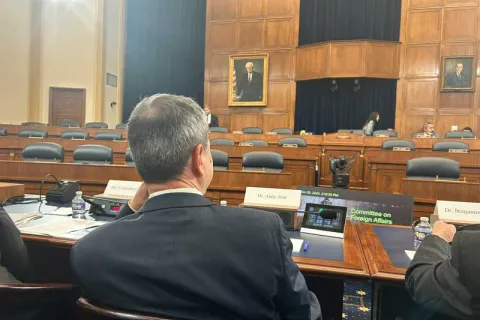Research meeting highlights access and intersectional challenges in U.S. and international communities
May 10, 2021During the second day of presentations at the International Society for Autism Research annual meeting, oral presentations of work in the U.S. and globally highlighted a continued struggle for access to autism care.
In her presentation on telehealth diagnostic measures, researcher Lily Wagner, Ph.D., from Vanderbilt University Medical Center’s Kennedy Center said their research on telehealth diagnosis actually began before the pandemic. The Tele-ASD-Peds (TAP) tool was intended to help reduce barriers faced by families who don’t have the resources or have a significant wait to get in-person diagnosis from a qualified provider, a situation facing many rural and minority families.
“TAP was developed in response to problems with our screen and refer systems of care,” said Wagner. “We developed a tool that is specifically designed to reduce some of that resource burden.”
Early data presented by Wagner from the clinical trial of the TAP tool supported its effectiveness as a diagnostic tool for children who were referred for autism evaluation, but further research was needed to see if the tool would be effective at other sites with more mixed groups of children.
After testing the tool with 200 providers from across specialties, from pediatricians to school psychologists and other health professionals, the research team found that the telehealth tool helped increase access for their patients. Other benefits included involving caregivers in the assessment and better flexibility.
Challenges included technology problems, distractions at home, caregivers had difficulty following the provider’s instructions, and telehealth was inappropriate for some children.
More than half, though, ended up using the TAP tool during telehealth diagnostic appointments, and 85 percent of the providers using it plan to continue using the tool after COVID restrictions are lifted.
In a related session, researchers at Children’s Mercy Kansas City presented findings about using telehealth to support caregivers during the pandemic. Located in an area with a range of patients from rural, suburban and urban neighborhoods, there was an existing lack of access to autism treatment services even prior to the pandemic. Knowing that, the research team looked for opportunities to support behavior management in other ways.
In the case of Children’s Mercy, the researchers tested the RUBI (Research Units in Behavioral Intervention) tool, which is used to coach parents and caregivers in managing behaviors in children with autism and related conditions. While this particular study began as an in-person study of the effectiveness of RUBI for their regions, the pandemic prompted the team to turn to the telehealth model of the program almost overnight. The families who participated were waiting for diagnostic services, so not all had autism, but those with disruptive behaviors who might benefit from parent coaching were referred to the study.
Even with the same number of providers, the telehealth RUBI model, which was delivered to some families 1-to-1 and to others in a group, allowed the team to triple the number of families served for behavioral intervention services from April through December of 2020.
In a later presentation about family and individual impacts of autism, researcher Bethlehem Tekola Gebru, Ph.D., from King’s College London shared her findings about the experiences of parents raising children with autism and related conditions in her home country of Ethiopia.
While the experiences of parents in high-income countries is well-document, Tekola Gebru’s highlight how the intersection of poverty, lack of services, single parenthood and cultural stigma shape the experiences of families in low-income countries.
Through interviews with 18 parents, researchers found that families in the city Addis Ababa and the rural town of Butajira struggles with providing basic needs like food and housing because they were often rejected by their family and community due to their child’s disability.
Single mothers in poverty bear an especially difficult burden, often describing making choices between their children’s safety, earning income and the ability to feed themselves and their children.
For one mother unable to feed her child when she herself became sick, “stigma and social isolation, which were experienced by many of the parents in our study, was not only about having a changed or strained relationship with family members of the community around her, but also it was a matter of survival,” she said.
Tekola Gebru’s work, partially supported by Autism Speaks, points to the need for interventions that support the social and cultural needs of communities where autism services are not available, including basic needs, family and community relationships.







